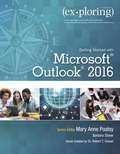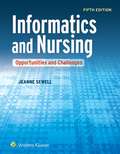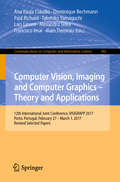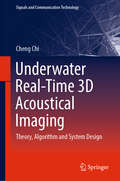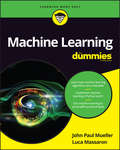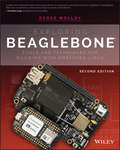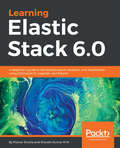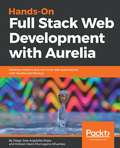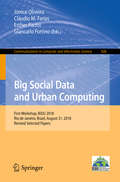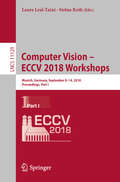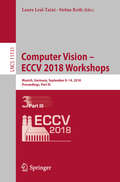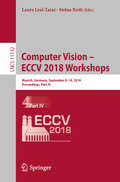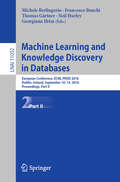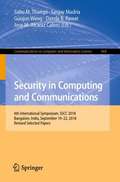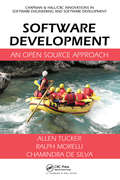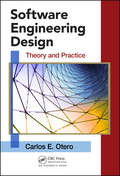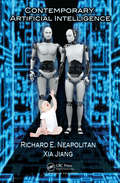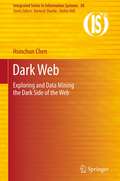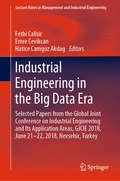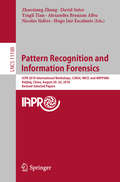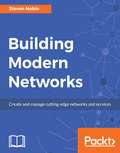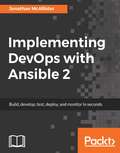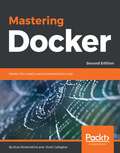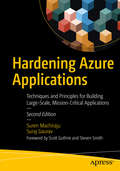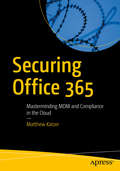- Table View
- List View
Exploring Getting Started with Microsoft Outlook 2016 (Exploring for Office 2016 Ser.)
by Mary Anne Poatsy Robert Grauer Barbara StoverThe goal of the Exploring series is to move students beyond the point-and-click, to understanding the why and how behind each skill. And because so much learning takes place outside of the classroom, this series provides learning tools that students can access anywhere, anytime. Students go to college now with a different set of skills than they did years ago. With this in mind, the Exploring series seeks to move students beyond the basics of the software at a faster pace, without sacrificing coverage of the fundamental skills that everyone needs to know.
Informatics And Nursing: Opportunities And Challenges
by Jeanne SewellInformatics and Nursing: Opportunities and Challenges is a comprehensive informatics text focused on helping the nursing student learn the basics of informatics. The contents proceed from Unit One which covers computer basics to Unit Five which examines skills and techniques for using the end product of informatics: data. The text provides the foundational knowledge to understand technology and use informatics to discover and manipulate information and access, manage, retrieve, and present clinical data. This text was designed to capture cutting-edge advancement in nursing informatics core competencies and applications and to present the theories, tools, and skills that every nurse should know. The new edition has been updated for currency and has had chapters reorganized and consolidated to help students focus on important information.
Computer Vision, Imaging and Computer Graphics – Theory and Applications: 12th International Joint Conference, VISIGRAPP 2017, Porto, Portugal, February 27 – March 1, 2017, Revised Selected Papers (Communications in Computer and Information Science #983)
by Ana Paula Cláudio Dominique Bechmann Paul Richard Takehiko Yamaguchi Lars Linsen Alexandru Telea Francisco Imai Alain TremeauThis book constitutes thoroughly revised and selected papers from the 12th International Joint Conference on Computer Vision, Imaging and Computer Graphics Theory and Applications, VISIGRAPP 2017, held in Porto, Portugal, February 27 - March 1, 2017. The 18 thoroughly revised and extended papers presented in this volume were carefully reviewed and selected from 402 submissions. The papers contribute to the understanding of relevant trends of current research on image and video formation, preprocessing, analysis and understanding; motion, tracking and stereo vision; computer graphics and rendering; data visualization and interactive visual data analysis; agent-based human-robot interactions; and user experience.
Underwater Real-Time 3D Acoustical Imaging: Theory, Algorithm and System Design (Signals and Communication Technology)
by Cheng ChiThis book presents the topic of underwater real-time 3-D acoustical imaging covering the theory, algorithms and system design. It summarizes recent advances in wideband and ultra-wideband underwater real-time 3-D acoustical imaging, which will be very useful for developing next-generation systems. Through simulation techniques, readers are able to quickly learn and develop practical underwater real-time 3-D acoustical imaging systems of their own.
Machine Learning For Dummies
by John Paul Mueller Luca MassaronYour no-nonsense guide to making sense of machine learning Machine learning can be a mind-boggling concept for the masses, but those who are in the trenches of computer programming know just how invaluable it is. Without machine learning, fraud detection, web search results, real-time ads on web pages, credit scoring, automation, and email spam filtering wouldn't be possible, and this is only showcasing just a few of its capabilities. Written by two data science experts, Machine Learning For Dummies offers a much-needed entry point for anyone looking to use machine learning to accomplish practical tasks. Covering the entry-level topics needed to get you familiar with the basic concepts of machine learning, this guide quickly helps you make sense of the programming languages and tools you need to turn machine learning-based tasks into a reality. Whether you're maddened by the math behind machine learning, apprehensive about AI, perplexed by preprocessing data--or anything in between--this guide makes it easier to understand and implement machine learning seamlessly. Grasp how day-to-day activities are powered by machine learning Learn to 'speak' certain languages, such as Python and R, to teach machines to perform pattern-oriented tasks and data analysis Learn to code in R using R Studio Find out how to code in Python using Anaconda Dive into this complete beginner's guide so you are armed with all you need to know about machine learning!
Exploring BeagleBone: Tools and Techniques for Building with Embedded Linux
by Derek MolloyIn-depth instruction and practical techniques for building with the BeagleBone embedded Linux platform Exploring BeagleBone is a hands-on guide to bringing gadgets, gizmos, and robots to life using the popular BeagleBone embedded Linux platform. Comprehensive content and deep detail provide more than just a BeagleBone instruction manual-you'll also learn the underlying engineering techniques that will allow you to create your own projects. The book begins with a foundational primer on essential skills, and then gradually moves into communication, control, and advanced applications using C/C++, allowing you to learn at your own pace. In addition, the book's companion website features instructional videos, source code, discussion forums, and more, to ensure that you have everything you need. The BeagleBone's small size, high performance, low cost, and extreme adaptability have made it a favorite development platform, and the Linux software base allows for complex yet flexible functionality. The BeagleBone has applications in smart buildings, robot control, environmental sensing, to name a few; and, expansion boards and peripherals dramatically increase the possibilities. Exploring BeagleBone provides a reader-friendly guide to the device, including a crash course in computer engineering. While following step by step, you can: Get up to speed on embedded Linux, electronics, and programming Master interfacing electronic circuits, buses and modules, with practical examples Explore the Internet-connected BeagleBone and the BeagleBone with a display Apply the BeagleBone to sensing applications, including video and sound Explore the BeagleBone's Programmable Real-Time Controllers Updated to cover the latest Beagle boards, Linux kernel versions, and Linux software releases. Includes new content on Linux kernel development, the Linux Remote Processor Framework, CAN bus, IoT frameworks, and much more! Hands-on learning helps ensure that your new skills stay with you, allowing you to design with electronics, modules, or peripherals even beyond the BeagleBone. Insightful guidance and online peer support help you transition from beginner to expert as you master the techniques presented in Exploring BeagleBone, the practical handbook for the popular computing platform.
Learning Elastic Stack 6.0: A beginner’s guide to distributed search, analytics, and visualization using Elasticsearch, Logstash and Kibana
by Sharath Kumar Pranav Shukla Marcelo Ochoa Saurabh ChhajedKey Features - Get to grips with the new features introduced in Elastic Stack 6.0 - Get valuable insights from your data by working with the different components of the Elastic stack such as Elasticsearch, Logstash, Kibana, X-Pack, and Beats - Includes handy tips and techniques to build, deploy and manage your Elastic applications efficiently on-premise or on the cloud Book Description The Elastic Stack is a powerful combination of tools for distributed search, analytics, logging, and visualization of data from medium to massive data sets. The newly released Elastic Stack 6.0 brings new features and capabilities that empower users to find unique, actionable insights through these techniques. This book will give you a fundamental understanding of what the stack is all about, and how to use it efficiently to build powerful real-time data processing applications. After a quick overview of the newly introduced features in Elastic Stack 6.0, you’ll learn how to set up the stack by installing the tools, and see their basic configurations. Then it shows you how to use Elasticsearch for distributed searching and analytics, along with Logstash for logging, and Kibana for data visualization. It also demonstrates the creation of custom plugins using Kibana and Beats. You’ll find out about Elastic X-Pack, a useful extension for effective security and monitoring. We also provide useful tips on how to use the Elastic Cloud and deploy the Elastic Stack in production environments. On completing this book, you’ll have a solid foundational knowledge of the basic Elastic Stack functionalities. You’ll also have a good understanding of the role of each component in the stack to solve different data processing problems. What you will learn - Familiarize yourself with the different components of the Elastic Stack - Get to know the new functionalities introduced in Elastic Stack 6.0 - Effectively build your data pipeline to get data from terabytes or petabytes of data into Elasticsearch and Logstash for searching and logging - Use Kibana to visualize data and tell data stories in real-time - Secure, monitor, and use the alerting and reporting capabilities of Elastic Stack - Take your Elastic application to an on-premise or cloud-based production environment
Hands-On Full Stack Web Development with Aurelia: Develop modern and real-time web applications with Aurelia and Node.js
by Diego Argüelles Rojas Erikson MurrugarraDevelop rich and scalable web applications with Node.js, Express.js, and MongoDBKey Features Learn the advanced features of Aurelia to build responsive web applicationsWrite clean, modular, and testable code that will be easy to maintain and evolveHarness the power of JavaScript on the client and server side to build full-stack applicationsBook DescriptionHands-On Full Stack Web Development with Aurelia begins with a review of basic JavaScript concepts and the structure of an Aurelia application generated with the Aurelia-CLI tool. You will learn how to create interesting and intuitive application using the Aurelia-Materialize plugin, which implements the material design approach. Once you fully configure a FIFA World Cup 2018 app, you'll start creating the initial components through TDD practices and then develop backend services to process and store all the user data.This book lets you explore the NoSQL model and implement it using one of the most popular NoSQL databases, MongoDB, with some exciting libraries to make the experience effortless. You'll also be able to add some advanced behavior to your components, from managing the lifecycle properly to using dynamic binding, field validations, and the custom service layer.You will integrate your application with Google OAuth Service and learn best practices to secure your applications. Furthermore, you'll write UI Testing scripts to create high-quality Aurelia Apps and explore the most used tools to run end-to-end tests. In the concluding chapters, you'll be able to deploy your application to the Cloud and Docker containers.By the end of this book, you will have learned how to create rich applications using best practices and modern approaches.What you will learnEmploy best practices and modern approaches to create frontend applicationsLearn about modern CSS preprocessors and improve the readability of your applicationUse the Aurelia framework to create navigable web applicationsWrite your own tests, making your application secure and fault-tolerantCreate solid RESTful APIs using the microservice architectureUnderstand the NoSQL paradigm and get the best performance from your databaseIntegrate third-party libraries such as Gmail for Single Sign OnWrite UI testing scripts and integration tests to build extensible appsWho this book is forHands-On Full Stack Web Development with Aurelia is for you if you are a web or full-stack JavaScript developer who has experience with traditional stacks such as LAMP, MEAN, or MERN and wish to explore the power of Aurelia and new stack with modern web technologies.
Big Social Data and Urban Computing: First Workshop, Bidu 2018, Rio De Janeiro, Brazil, August 31, 2018, Revised Selected Papers (Communications in Computer and Information Science #926)
by Jonice Oliveira Claudio M. Farias Esther Pacitti Giancarlo FortinoThis book constitutes the thoroughly refereed proceedings of the First Big Social Data and Urban Computing Workshop, BiDU 2018, held in Rio de Janeiro, Brazil, in August 2018. The 11 full papers presented were carefully reviewed and selected from 40 submissions. The papers are organized in topical sections on urban mobility, urban sensing, contemporary social problems, collaboration and crowdsourcing.
Computer Vision – ECCV 2018 Workshops: Munich, Germany, September 8-14, 2018, Proceedings, Part I (Lecture Notes in Computer Science #11129)
by Laura Leal-Taixé Stefan RothThe six-volume set comprising the LNCS volumes 11129-11134 constitutes the refereed proceedings of the workshops that took place in conjunction with the 15th European Conference on Computer Vision, ECCV 2018, held in Munich, Germany, in September 2018.43 workshops from 74 workshops proposals were selected for inclusion in the proceedings. The workshop topics present a good orchestration of new trends and traditional issues, built bridges into neighboring fields, and discuss fundamental technologies and novel applications.
Computer Vision – ECCV 2018 Workshops: Munich, Germany, September 8-14, 2018, Proceedings, Part I (Lecture Notes in Computer Science #11129)
by Laura Leal-Taixé Stefan RothThe six-volume set comprising the LNCS volumes 11129-11134 constitutes the refereed proceedings of the workshops that took place in conjunction with the 15th European Conference on Computer Vision, ECCV 2018, held in Munich, Germany, in September 2018.43 workshops from 74 workshops proposals were selected for inclusion in the proceedings. The workshop topics present a good orchestration of new trends and traditional issues, built bridges into neighboring fields, and discuss fundamental technologies and novel applications.
Computer Vision – ECCV 2018 Workshops: Munich, Germany, September 8-14, 2018, Proceedings, Part I (Lecture Notes in Computer Science #11129)
by Laura Leal-Taixé Stefan RothThe six-volume set comprising the LNCS volumes 11129-11134 constitutes the refereed proceedings of the workshops that took place in conjunction with the 15th European Conference on Computer Vision, ECCV 2018, held in Munich, Germany, in September 2018.43 workshops from 74 workshops proposals were selected for inclusion in the proceedings. The workshop topics present a good orchestration of new trends and traditional issues, built bridges into neighboring fields, and discuss fundamental technologies and novel applications.
Machine Learning and Knowledge Discovery in Databases: European Conference, Ecml Pkdd 2018, Dublin, Ireland, September 10-14, 2018, Proceedings, Part I (Lecture Notes in Computer Science #11052)
by Michele Berlingerio Francesco Bonchi Thomas Gärtner Neil Hurley Georgiana Ifrimhe three volume proceedings LNAI 11051 – 11053 constitutes the refereed proceedings of the European Conference on Machine Learning and Knowledge Discovery in Databases, ECML PKDD 2018, held in Dublin, Ireland, in September 2018. The total of 131 regular papers presented in part I and part II was carefully reviewed and selected from 535 submissions; there are 52 papers in the applied data science, nectar and demo track. The contributions were organized in topical sections named as follows: Part I: adversarial learning; anomaly and outlier detection; applications; classification; clustering and unsupervised learning; deep learningensemble methods; and evaluation.
Security in Computing and Communications: 6th International Symposium, SSCC 2018, Bangalore, India, September 19–22, 2018, Revised Selected Papers (Communications in Computer and Information Science #969)
by Sabu M. Thampi Sanjay Madria Guojun Wang Danda B. Rawat Jose M. Alcaraz CaleroThis book constitutes the refereed proceedings of the 6th International Symposium on Security in Computing and Communications, SSCC 2018, held in Bangalore, India, in September 2018. The 34 revised full papers and 12 revised short papers presented were carefully reviewed and selected from 94 submissions. The papers cover wide research fields including cryptography, database and storage security, human and societal aspects of security and privacy.
Software Development: An Open Source Approach (Chapman And Hall/crc Innovations In Software Engineering And Software Development Ser.)
by Allen TuckerTo understand the principles and practice of software development, there is no better motivator than participating in a software project with real-world value and a life beyond the academic arena. Software Development: An Open Source Approach immerses students directly into an agile free and open source software (FOSS) development process. It focus
Software Engineering Design: Theory and Practice (Applied Software Engineering Ser.)
by Carlos OteroTaking a learn-by-doing approach, Software Engineering Design: Theory and Practice uses examples, review questions, chapter exercises, and case study assignments to provide students and practitioners with the understanding required to design complex software systems. Explaining the concepts that are immediately relevant to software designers, it be
Contemporary Artificial Intelligence (Chapman And Hall/crc Artificial Intelligence And Robotics Ser.)
by Richard E. NeapolitanThe notion of artificial intelligence (AI) often sparks thoughts of characters from science fiction, such as the Terminator and HAL 9000. While these two artificial entities do not exist, the algorithms of AI have been able to address many real issues, from performing medical diagnoses to navigating difficult terrain to monitoring possible failures
Dark Web: Exploring and Data Mining the Dark Side of the Web (Integrated Series in Information Systems #30)
by Hsinchun ChenThe University of Arizona Artificial Intelligence Lab (AI Lab) Dark Web project is a long-term scientific research program that aims to study and understand the international terrorism (Jihadist) phenomena via a computational, data-centric approach. We aim to collect "ALL" web content generated by international terrorist groups, including web sites, forums, chat rooms, blogs, social networking sites, videos, virtual world, etc. We have developed various multilingual data mining, text mining, and web mining techniques to perform link analysis, content analysis, web metrics (technical sophistication) analysis, sentiment analysis, authorship analysis, and video analysis in our research. The approaches and methods developed in this project contribute to advancing the field of Intelligence and Security Informatics (ISI). Such advances will help related stakeholders to perform terrorism research and facilitate international security and peace. This monograph aims to provide an overview of the Dark Web landscape, suggest a systematic, computational approach to understanding the problems, and illustrate with selected techniques, methods, and case studies developed by the University of Arizona AI Lab Dark Web team members. This work aims to provide an interdisciplinary and understandable monograph about Dark Web research along three dimensions: methodological issues in Dark Web research; database and computational techniques to support information collection and data mining; and legal, social, privacy, and data confidentiality challenges and approaches. It will bring useful knowledge to scientists, security professionals, counterterrorism experts, and policy makers. The monograph can also serve as a reference material or textbook in graduate level courses related to information security, information policy, information assurance, information systems, terrorism, and public policy.
Industrial Engineering in the Big Data Era: Selected Papers from the Global Joint Conference on Industrial Engineering and Its Application Areas, GJCIE 2018, June 21–22, 2018, Nevsehir, Turkey (Lecture Notes in Management and Industrial Engineering)
by Fethi Calisir Emre Cevikcan Hatice Camgoz AkdagThis book gathers extended versions of the best papers presented at the Global Joint Conference on Industrial Engineering and Its Application Areas (GJCIE), held in Nevsehir, Turkey, on June 21-22, 2018. They reports on industrial engineering methods and applications, with a special focus on the advantages and challenges posed by Big data in this field. The book covers a wide range of topics, including decision making, optimization, supply chain management and quality control.
Pattern Recognition and Information Forensics: ICPR 2018 International Workshops, CVAUI, IWCF, and MIPPSNA, Beijing, China, August 20-24, 2018, Revised Selected Papers (Lecture Notes in Computer Science #11188)
by Zhaoxiang Zhang David Suter Yingli Tian Alexandra Branzan Albu Nicolas Sidère Hugo Jair EscalanteThis book constitutes the refereed post-conference proceedings of 3 workshops, held at the 24th International Conference on Pattern Recognition, Beijing, China, in August 2018: the Third International Workshop on Computer Vision for Analysis of Underwater Imagery, CVAUI 2018, the 7th International Workshop on Computational Forensics, IWCF 2018, and the International Workshop on Multimedia Information Processing for Personality and Social Networks Analysis, MIPPSNA 2018.The 16 full papers presented in this book were carefully reviewed and selected from 23 submissions. CVAUI Workshop: The analysis of underwater imagery imposes a series of unique challenges, which need to be tackled by the computer vision community in collaboration with biologists and ocean scientists. IWCF Workshop: With the advent of high-end technology, fraudulent efforts are on rise in many areas of our daily life, may it be fake paper documents, forgery in the digital domain or copyright infringement. In solving the related criminal cases use of pattern recognition (PR) principles is also gaining an important place because of their ability in successfully assisting the forensic experts to solve many of such cases. MIPPSNA Workshop: Its goal is to compile the latest research advances on the analysis of multimodal information for facing problems that are not visually obvious, this is, problems for which the sole visual analysis is insufficient to provide a satisfactory solution.
Building Modern Networks
by Steven NobleGain the edge with SDN, NFV, network virtualization, and networking on clouds About This Book • Navigate through the complexities of delivering modern networking services with practical techniques and solutions • Build robust software defined networks and solve real-world problems involving challenges with next generation networks • Discover the best practices used by top industry professionals for network-related architecture, services, and applications and secure your networks Who This Book Is For This book is for Network Engineers and Network Administrators who are taking their first steps when deploying software-defined networks. Network Architects will also find this book useful when designing and building modern networks. What You Will Learn • Understand Traditional Network Challenges to match modern applications requirements • Find out all about Next Generation Networks (NGN) • Explore the different APIs used to control NGN devices • Understand the different software controllers available to manage NGN hardware • Design a next generation network In Detail As IT infrastructures become more software-defined, networking operations tend to be more automated with falling levels of manual configuration at the hardware level. Building Modern Networks will brush up your knowledge on the modern networking concepts and help you apply them to your software-defined infrastructure. In this book you'll gain the knowledge necessary to evaluate, choose, and deploy a next generation network design. We will cover open and closed network operating systems (NOS) along with the protocols used to control them such as OpenFlow, Thrift, Opflex, and REST. You will also learn about traffic engineering and security concepts for NGNs. You will also find out how to fine-tune your network using QoS and QoE. By the end of the book, you'll be well versed in simplifying the way you design, build, operate, and troubleshoot your network. Style and Approach This practical tutorial shows you real-world solutions to design and build network services through cutting edge research.
Implementing DevOps with Ansible 2
by Jonathan McallisterLeverage the power of Ansible 2 and related tools and scale DevOps processes About This Book • Learn how to use Ansible playbooks along with YAML and JINJA to create efficient DevOps solutions • Use Ansible to provision and automate Docker containers and images • Learn the fundamentals of Continuous Integration and Continuous Delivery and how to leverage Ansible to implement these modern DevOps • Learn the fundamentals of creating custom Ansible modules • Learn the fundamentals of Ansible Galaxy • Follow along step-by-step as we teach you to scale Ansible for your DevOps processes Who This Book Is For If you are a DevOps engineer, administrator, or developer and want to implement the DevOps environment in your organization using Ansible, then this book is for you. What You Will Learn • Get to the grips with the fundamentals of Ansible 2.2 and how you can benefit from leveraging Ansible for DevOps. • Adapt the DevOps process and learn how Ansible and other tools can be used to automate it. • Start automating Continuous Integration and Continuous Delivery tasks using Ansible • Maximize the advantages of tools such as Docker, Jenkins, JIRA, and many more to implement the DevOps culture. • Integrate DevOps tools with Ansible • Extend Ansible using Python and create custom modules that integrate with unique specific technology stacks • Connect and control the states of various third-party applications such as GIT, SVN, Artifactory, Nexus, Jira, Hipchat, Slack, Nginx, and others In Detail Thinking about adapting the DevOps culture for your organization using a very simple, yet powerful automation tool, Ansible 2? Then this book is for you! In this book, you will start with the role of Ansible in the DevOps module, which covers fundamental DevOps practices and how Ansible is leveraged by DevOps organizations to implement consistent and simplified configuration management and deployment. You will then move on to the next module, Ansible with DevOps, where you will understand Ansible fundamentals and how Ansible Playbooks can be used for simple configuration management and deployment tasks. After simpler tasks, you will move on to the third module, Ansible Syntax and Playbook Development, where you will learn advanced configuration management implementations, and use Ansible Vault to secure top-secret information in your organization. In this module, you will also learn about popular DevOps tools and the support that Ansible provides for them (MYSQL, NGINX, APACHE and so on). The last module, Scaling Ansible for the enterprise, is where you will integrate Ansible with CI and CD solutions and provision Docker containers using Ansible. By the end of the book you will have learned to use Ansible to leverage your DevOps tasks. Style and approach A step-by-step guide to automating all DevOps stages with ease using Ansible
Mastering Docker - Second Edition: Unlock New Opportunities Using Docker's Most Advanced Features, 3rd Edition
by Russ Mckendrick Scott GallagherUnlock new opportunities using Docker's most advanced features. About This Book • Experience first- and third-party tools such as Docker Compose, Docker Machine, Portainer, and Rancher • Learn how to leverage Kubernetes, Amazon ECS, and Docker Swarm and know when each solution is appropriate • Discover how Docker can be integrated into your daily workflows Who This Book Is For If you are an I.T Professional and recognize Docker's importance for innovation in everything from system administration to web development, but aren't sure how to use it to its full potential, this book is for you. What You Will Learn • Become fluent in the basic components and concepts of Docker • Secure your containers and files with Docker's security features • Extend Docker and solve architectural problems using first- and third-party orchestration tools, service discovery, and plugins • Leverage the Linux container virtualization paradigm by creating highly scalable applications In Detail Docker has been a game-changer when it comes to how modern applications are deployed and architectured. It has now grown into a key driver of innovation beyond system administration, with an impact on the world of web development and more. But how can you make sure you're keeping up with the innovations it's driving This book shows you how; it not only demonstrates how to use Docker more effectively, it also helps you rethink and reimagine what's possible with Docker. You will also cover basic topics such as building, managing and storing images along with best practices to make you confident before delving more deeply into Docker security. You'll find everything related to extending and integrating Docker in new and innovative ways. Docker Swarm and Docker Compose will help you take control of your containers in an efficient way. By the end of the book, you will have a broad and detailed sense of exactly what's possible with Docker and how seamlessly it fits in with a range of other platforms and tools. Style and approach A clear, concise, and straightforward book to make you a Master in Docker by including topics such as extending and integrating Docker along with different Docker tools, in a way that's accessible and practical. This book has been created to help you put new ideas into practice, and to demonstrate precisely what's possible with Docker.
Hardening Azure Applications: Techniques and Principles for Building Large-Scale, Mission-Critical Applications
by Suren Machiraju Suraj GauravBuild large-scale, mission-critical hardened applications on the Azure cloud platform. This 2nd edition provides information on the newer features in Azure, such as Linux extensions and supporting Azure Services such as HDInsight and SQL Server on Linux. Updated with new applications Hardening Azure Applications also discusses Scale Sets (VMSS), a major upgrade that enables autoscaling and seamlessly makes machines ready for high availability. The authors take you step by step through the process of evaluating and building applications with the appropriate hardness attributes. After a small introduction to cloud computing, you will learn about various cloud and hardened cloud applications in detail. Next, you will discover service fundamentals such as instrumentation, telemetry, and monitoring followed by key application experiences. Further, you will cover availability and the economics of 9s. Towards the end, you will see how to secure your application and learn about the modernization of software organisations, a new topic in this edition.After reading this book, you will master the techniques and engineering principles that every architect and developer needs to know to harden their Azure/.NET applications to ensure maximum reliability and high availability when deployed at scale.What You Will LearnUse techniques and principles to harden Azure/.NET applicationsSecure your applications on AzureCreate a scale set on Azure Work with service fundamentals such as instrumentation, telemetry, and monitoringWho This Book Is ForDevelopers and IT professionals who are working on Azure applications.
Securing Office 365: Masterminding MDM and Compliance in the Cloud
by Matthew KatzerUnderstand common security pitfalls and discover weak points in your organization’s data security, and what you can do to combat them. This book includes the best approaches to managing mobile devices both on your local network and outside the office.Data breaches, compliance fines, and distribution of personally identifiable information (PII) without encryption or safeguards place businesses of all types at risk. In today’s electronic world, you must have a secure digital footprint that is based on business processes that are designed to protect information. This book is written for business owners, chief information security officers (CISO), and IT managers who want to securely configure Office 365. You will follow the Microsoft cybersecurity road map through a progressive tutorial on how to configure the security services in Office 365 to protect and manage your business.What You’ll LearnManage security with the Azure Security Center and the Office 365 Compliance CenterConfigure information protection for document and electronic communicationsMonitor security for your business in the cloudUnderstand Mobile Application Management (MAM) and Mobile Device Management (MDM)Prevent data loss in Office 365Configure and manage the compliance manager tools for NIST and GDPRWho This Book Is ForIT managers and compliance and cybersecurity officers who have responsibility for compliance and data security in their business
